October in Amakusa
Fall has come to Amakusa, and with it a subtle change of colors, not to mention some of the best weather of the year. Dusting off our climbing and biking equipment, are making the best of it. Here are a few pictures snapped along the way going rock climbing, biking, kayaking...
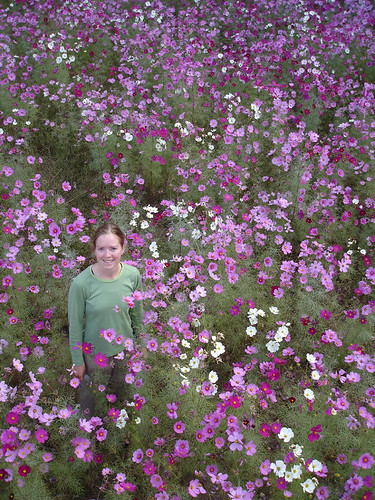
Cosmos is Japan’s national fall flower. In many places, rice paddies drained and harvested earlier are heavily seeded with this ornamental, and by mid-fall the fields burst forth in delicate purplish colors. Though the Japanese call this flower kosumosu, when written, the kanji characters spell “autumn cherry blossom”. And so romancing couples, families in minivans, and groups of elderly folks again visit the countryside in search of these fleeting bursts of color.
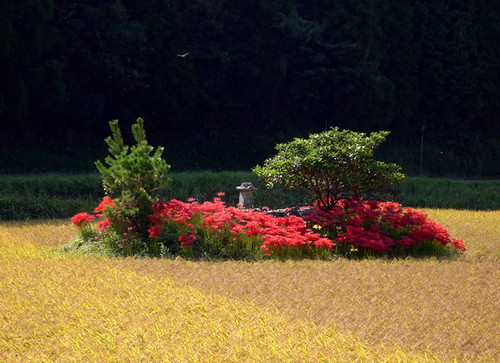
Ojizou-sama, a land-protecting deity, has guarded these fields from his small rock-island ringed by higanbana flowers. He has done his duty well: the rice in the fields seems to have come undamaged through the season’s two typhoons.
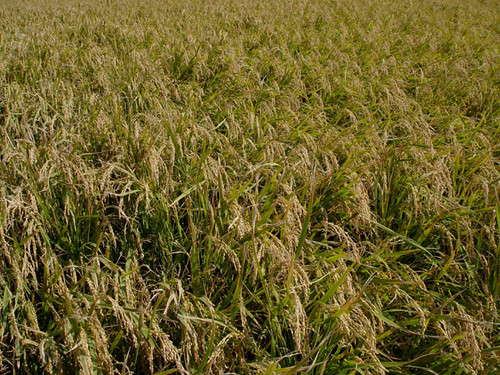
Elsewhere, some of the fields have been roughed-up a bit, but overall, the storms came early and the young plants had resisted the winds well. Now the paddies have been drained, and the rice is rapidly drying on the stalk, ready to be harvested. Early October is the busiest rice harvest season here.
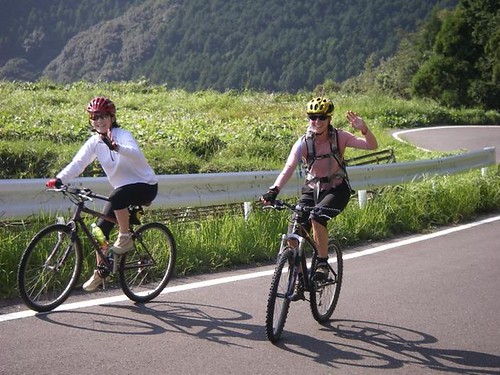
As the summer’s heat wanes, the nights are pleasantly cool and daytime temperatures hover near the 25-degree mark. Free from the heat, we have reinstated the Saturday morning MTB rides (all are welcome!).
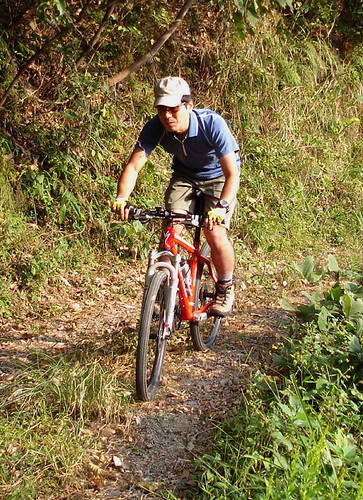
Here, Kazuhisa displays speed and skill as he descends a twisty double-track in Sousaku, Kawaura Town.
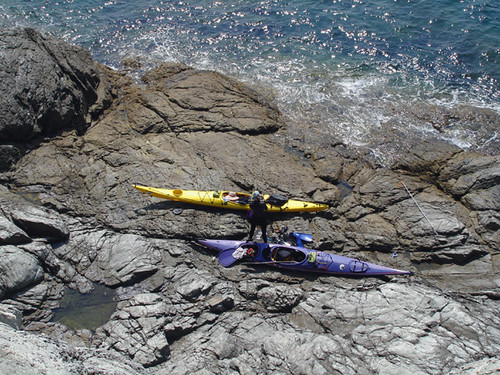
Fall is also the best time for spear fishing, what with the calm seas, warm water, and brilliant sunny weather. Around twice a week, we set out on our kayaks for an hour’s paddle to one of the outlying rocks, where we dive for fish. Typically, within two hours our cooler is full and we return home with far more than we can eat. Students, fellow teachers, and friends are all delighted to receive presents of fresh, quality fish. Here, Leanne is ready to plunge into the sea off the rocks of Okinose in Amakusa’s southwest extremity.
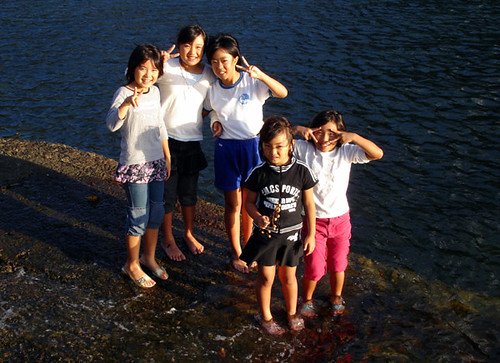
On Saturday evenings, I make the 35-minute scenic drive to the west coast village of Shimoda, where we hold one English class a week for elementary school aged kids. I have always enjoyed teaching in Shimoda. Here the class of ’06 are seen dipping their feet in the sea just before the start of their lesson.

Cosmos is Japan’s national fall flower. In many places, rice paddies drained and harvested earlier are heavily seeded with this ornamental, and by mid-fall the fields burst forth in delicate purplish colors. Though the Japanese call this flower kosumosu, when written, the kanji characters spell “autumn cherry blossom”. And so romancing couples, families in minivans, and groups of elderly folks again visit the countryside in search of these fleeting bursts of color.

Ojizou-sama, a land-protecting deity, has guarded these fields from his small rock-island ringed by higanbana flowers. He has done his duty well: the rice in the fields seems to have come undamaged through the season’s two typhoons.

Elsewhere, some of the fields have been roughed-up a bit, but overall, the storms came early and the young plants had resisted the winds well. Now the paddies have been drained, and the rice is rapidly drying on the stalk, ready to be harvested. Early October is the busiest rice harvest season here.

As the summer’s heat wanes, the nights are pleasantly cool and daytime temperatures hover near the 25-degree mark. Free from the heat, we have reinstated the Saturday morning MTB rides (all are welcome!).

Here, Kazuhisa displays speed and skill as he descends a twisty double-track in Sousaku, Kawaura Town.

Fall is also the best time for spear fishing, what with the calm seas, warm water, and brilliant sunny weather. Around twice a week, we set out on our kayaks for an hour’s paddle to one of the outlying rocks, where we dive for fish. Typically, within two hours our cooler is full and we return home with far more than we can eat. Students, fellow teachers, and friends are all delighted to receive presents of fresh, quality fish. Here, Leanne is ready to plunge into the sea off the rocks of Okinose in Amakusa’s southwest extremity.

On Saturday evenings, I make the 35-minute scenic drive to the west coast village of Shimoda, where we hold one English class a week for elementary school aged kids. I have always enjoyed teaching in Shimoda. Here the class of ’06 are seen dipping their feet in the sea just before the start of their lesson.


0 Comments:
Post a Comment
<< Home